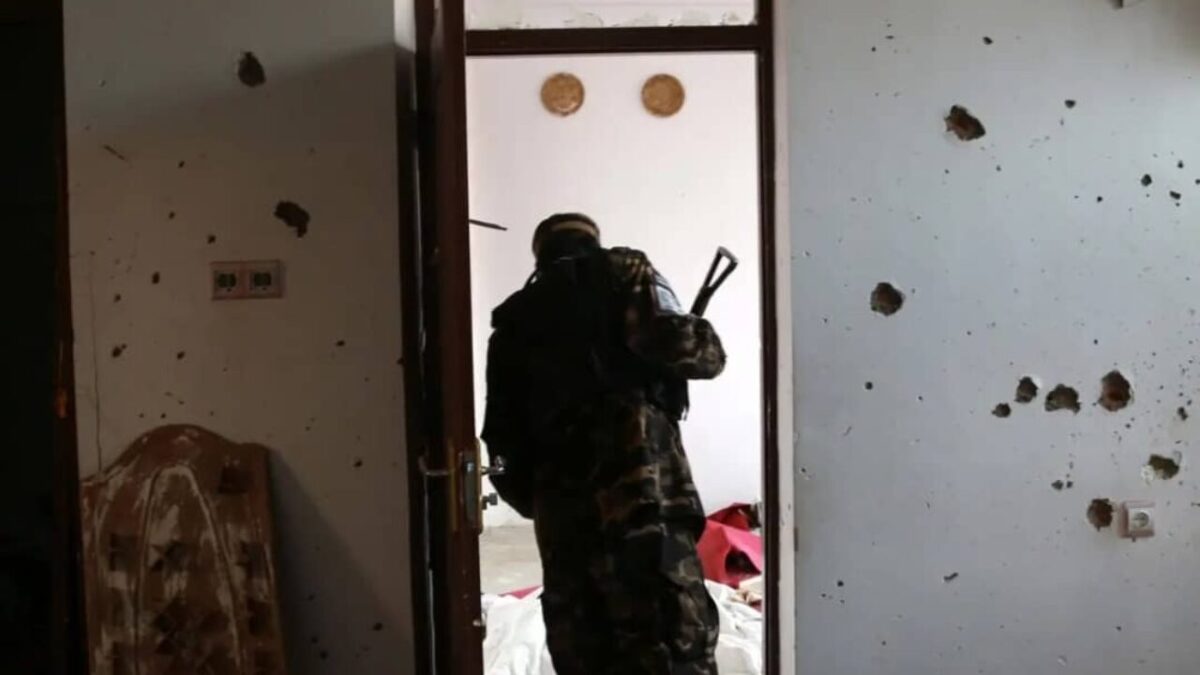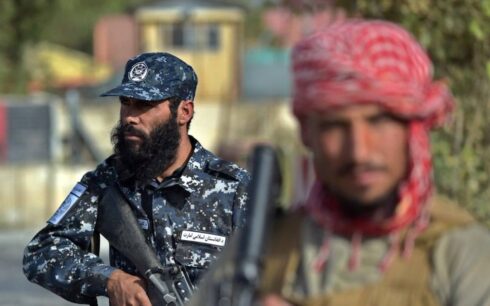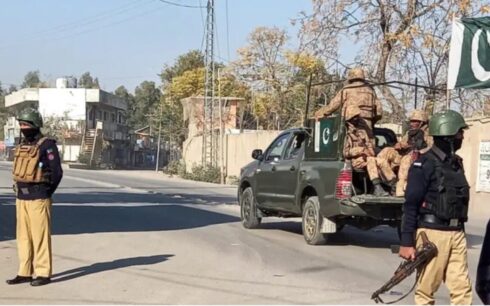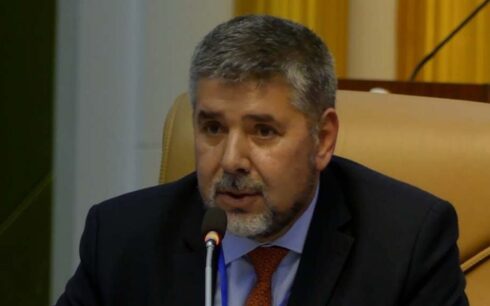The phenomenon known as ISIS has been conducting attacks against the people of Afghanistan, security and defence forces (the Republic), international troops, and occasionally the Taliban since at least 2015, and continues to do so with increased intensity against the Afghan populace, sometimes targeting the Taliban as well.
The initial armed actions attributed to ISIS in Afghanistan date back to February 2015. In that month, ISIS members carried out an armed operation in which they killed a Taliban commander named Abdul Ghani in Logar province. Later, the largest clash between the Taliban and ISIS occurred in November 2015 in Zabul province. In this conflict, Maladadullah, a Taliban commander, had joined ISIS. This action displeased the then-leader of the Taliban, Mullah Akhtar Mohammad Mansour, who mobilized his forces to suppress this commander who had defected from the Taliban. The several-day conflict took place in the Khak Afghan (Khak-i-Iran) and Arghandab districts, resulting in a defeat for both ISIS and Maladadullah. According to official information at the time, several foreign fighters, particularly citizens from Uzbekistan and Chechnya, were among ISIS members, and Maladadullah was killed in this conflict.
Although some media labeled this clash as an intra-Taliban conflict, the reality was that internal competition within the Taliban, particularly for reaching and maintaining power, had created a significant rift between Maladadullah and Mullah Akhtar Mohammad Mansour. Maladadullah allied with ISIS in a bid for greater power.
One of the serious incidents that highlighted ISIS’s presence and shocked the Afghan populace was the hostage taking of several Hazara from the Jaghori, in Zabul area in November 2015. Among the captives were women and children, and despite extensive efforts by the then-government and local residents, ISIS ruthlessly beheaded them. The beheading of a nine-year-old girl named Shukria Tabasum drew significant public attention and led to the emergence of a large and unprecedented advocacy movement known as the Tabasum Movement.
In 2016, another major clash between the Taliban and ISIS took place in the Nazyan district of Nangarhar province. At that time, Afghan security forces also confirmed this conflict, with the Taliban claiming to have seized an ISIS base in this district.
Meanwhile, ISIS had the most engagements and presence against Afghan and foreign security forces in Nangarhar and Zabul provinces. In July 2016, Hafiz Saeed, a senior ISIS leader originally from the Orakzai region of Khyber Pakhtunkhwa, Pakistan, was killed in an airstrike by international forces along with several other group members.
Despite severe repression from Afghan security and defense forces, ISIS continued to recruit and expand its influence in Nangarhar province by exploiting local conditions (Salafism) and the discontent among Pakistani and Afghan Taliban. This group established a stronghold in the Achin and Nazyan districts of Nangarhar. In many instances, military operations by former security and defence forces failed to eliminate the group’s control permanently, until American forces dropped the largest non-nuclear bomb, known as the “Mother of All Bombs,” to eliminate one of ISIS’s key command and gathering centres in the Achin district of Nangarhar.
After 2016, ISIS increasingly focused its attacks on soft targets, including the Hazara community in Afghanistan. Exploiting security vacuums in urban areas and main roads of Afghanistan, the group persistently targeted Hazara citizens. The largest attack considered one of the deadliest for the Hazaras was on the civil protest movement known as the “Roshnai Movement” in the Dehmzang circle, PD3 of Kabul. Since then, various educational centres (Sayed Al-Shuhada Girls High School, Kaj Educational Center, Kawsar Educational Center, Abdul Rahim Shaheed High School, etc.), healthcare facilities (Dasht-e-Barchi Maternity Hospital), sports centers (Maiwand Sports Club, Mellat Sports Club), mosques (Imam Zaman Mosque in PD11, Imam Zaman Mosque in Dasht-e-Barchi PD18, Sakhi Shrine in Kabul PD3, Imam Zaman Mosque in Pul-i-Khumri city, and the Seh-Dokan Mosque in Mazar-i-Sharif city, etc.) belonging to Hazaras have been subjected to complex ISIS attacks. These attacks were systematically directed against a specific ethnic group solely based on their ethnic-religious identity, and many experts believe that these attacks clearly constitute genocide.
Additionally, ISIS has relentlessly continued its attacks against civilians in Nangarhar province. Members of this group released a propaganda video showing them executing several civilians in Achin district, blindfolding them and then detonating explosives simultaneously. This video quickly spread among the Afghan populace, particularly in eastern provinces, instilling great fear.
Why Afghanistan an Ideal Location for ISIS
Ready minds to welcome religious extremism
For many years, the promotion of jihad and the exploitation of one of the five pillars of Islam have been widespread among governments and non-state armed groups, with jihadism gradually shifting towards religious extremism and even religious terrorism. Although the term jihad has been used in Afghanistan for a long time, it peaked during the last forty years, especially during the war of jihadist groups against the Soviet Union and its supported government in Afghanistan. Experts believe that radical jihadism is a serious issue that has alarmingly penetrated various layers of Afghan society. Years of efforts to promote jihad, particularly through highly radical narratives, have made Afghan society more receptive to extremism and religious terrorism than any other country. This seed, which has been used for years to gain and sustain ethnic and group power, has now turned into a robust tree of absolute extremism.
The long-standing promotion of jihadism has, unfortunately, so distorted the mindsets of a significant portion of Afghan citizens that they can see and hear nothing but the narratives of mullahs whose mission is to be hostile to humanity. Many families have proudly handed over their young children to the Haqqani network and the Taliban over the past two decades to carry out indiscriminate suicide attacks in crowded urban areas.
Afghan society has been seriously affected by this process. In some areas, the effects are severe, while in others, they are somewhat less visible. Thus, this capacity has become an exceptional opportunity for all radical Islamic groups to easily reap its benefits. In this context, seemingly peaceful organizations, such as Hizb ut-Tahrir and Jamaat-e-Islah, have emerged as the most important and influential entities active in Afghanistan, serving as breeding grounds for the next generation for all terrorist groups. The overwhelming majority of those who step into the doors of these two organizations emerge with a deeply radical mindset, contrary to all modern human values, and are released into society. Both of these groups, unfortunately, freely propagated radical religious thoughts during the Republic, exploiting the freedom of expression and democracy. In all educational institutions and propaganda apparatuses of these two organizations, efforts are made to inject extremism into the minds and psyches of adolescents and youth. Hizb ut-Tahrir openly strives to establish an Islamic caliphate in the world, which aligns with the primary demands of ISIS.
Geographical Complexity
A large part of Afghanistan’s geography, due to its mountainous and difficult terrain, has always been a preferred location for groups whose main warfare tactic is guerrilla warfare. Mujahideen groups maximized this advantage in defeating the Soviet-backed government, as well as in inter-group conflicts and during the Taliban’s war against the Afghanistan government and international forces over the past two decades.
The mountainous and remote nature of many areas in Afghanistan has resulted in the government’s control always being incomplete, and services provided to citizens, regardless of how just the developmental programs were, remain insufficient. In these remote areas, free from official oversight, influential local figures and mullahs exercise a form of independent governance. They hold the pulse of the community in the name of ethnicity and religion and exploit this power for their own interests whenever they feel threatened. As a result, Afghanistan has consistently witnessed rural uprisings against urban centers or, in other words, traditionalism against modernity.
Currently, the ruling regime in Afghanistan is in a poor state of political instability and legitimacy, and the Taliban not only have no intention of providing services to the people but also lack the capacity to do so. Analysts believe that individuals in this group, having recently encountered urban culture, see the current situation as a divine bounty for themselves, committed to plundering public resources and national revenues while oppressing Non-insider of Afghanistan (defined as Non-insider according to Taliban thought). This situation, combined with geographical complexity, has created large security gaps, from which groups like ISIS benefit the most.
Lack of a Legitimate Government
Many analysts of Afghan affairs believe that the current regime, run by the Taliban, has come to power as a result of a political deal between the United States and the Taliban. Given this Doha political arrangement, this regime lacks any form of democratic or even customary legitimacy in the eyes of the Afghan people and has not been recognized by any foreign country after three years.
This internal and external illegitimacy has posed a serious challenge to any joint regional and international oversight of the security situation in Afghanistan. Afghanistan now resembles a lawless space where everyone [Taliban members] has their own law and power. This situation has created an exceptional opportunity for various international terrorist groups, which, according to many Afghan affairs experts, number around 21, to regain strength in this lawless ground.
Al-Qaeda, as a major partner of the Taliban’s ruling theocracy [i called Mulla_cracy] in Afghanistan, has important centers for recruiting and training its members. Other jihadist groups, with a history of severe terrorism, such as Tehrik-i-Taliban Pakistan, Jaish ul-Adl, the East Turkestan Islamic Movement, the Islamic Movement of Uzbekistan, Lashkar-e-Taiba, and Ansarullah of Tajikistan, along with several other groups and their subsidiaries, have become active and stronger as the Taliban’s arms in suppressing the people of Afghanistan and creating insecurity in the region.
Similar narrative
ISIS, like all other radical jihadist groups, has been trained in a similar school of thought. The narrative of all radical Islamic jihadists regarding the establishment of an absolute Islamic system in the world (according to their own understanding) and hostility towards non-Muslims is similar across the board. The ultimate goal of all these groups is the same, and they have shed rivers of blood to achieve it. Domestically, the Taliban’s narrative towards other religious sects, including the Shia, is completely aligned with that of ISIS. Both ISIS and the Taliban regard Shias as heretics and view much of their religious practices as innovations and contrary to Islam. According to this narrative, Shias are categorized alongside non-believers, and eliminating them is seen as a religious duty. Although the Taliban outwardly deny any issues with the Hazaras and Shias, in reality, Taliban policies and thinking define this religious-ethnic group as an enemy and take action against them whenever possible or create opportunities for others to do so. The Taliban’s reaction to the killing of three Middle Eastern jihadists (Hassan Nasrallah, Ismail Haniyeh, and Yahya Sinwar) is telling of this narrative; they do not recognize Shias as Muslims. The Taliban officially condemned the killings of two key Hamas leaders, but remained silent regarding the death of Hassan Nasrallah.
Some analysts believe that most Islamic radical groups, such as ISIS, Al-Qaeda, and the Taliban, have tried to exploit the war in Gaza for recruitment purposes by using it as a form of propaganda to invite new members and expand their activities in hopes of bolstering their influence. In Afghanistan, ISIS exploits these recruitment opportunities; as the Taliban and similar groups have propagated their narrative over the past three decades, it has become acceptable to many Afghan citizens.
Taliban’s instrumental use of IS-KP
Taliban officials at various levels have repeatedly claimed the establishment of national security and the eradication of IS-KP in Afghanistan, presenting it as an achievement of their regime both domestically and internationally. However, the numerous attacks carried out by ISIS indicate that not only has this group not been eradicated, but it has found greater room for manoeuvre. As mentioned earlier, ISIS, with its similar narrative, is now deeply intertwined with the Taliban, posing a constant threat even in the most secure administration and areas of this group. The assassination of the governor of Taliban in Balkh while he was in his office, the killing of the deputy governor of Taliban in Badakhshan by a car bomb, suicide attacks in the Taliban governor’s office in Nimroz, the planting of explosives within the mosque Ministry of Interior of Taliban, and several other incidents exemplify these threats.
The Taliban utilizes IS-KP instrumentally both domestically and internationally, both operationally and in terms of propaganda. There is ample evidence that many terrorist attacks against the people of Afghanistan, especially against the Hazaras, are coordinated closely with some sections of the Taliban. When they plan to suppress Tajiks and former national security and defence forces (ANDSF), they brutally eliminate them, labelling them as members of IS-KP throughout Afghanistan. When they want to showcase their power, they claim that ISIS no longer exists in Afghanistan. However, when regional and international meetings are taking place, or when ISIS is cited as a threat to international security in international forums, the Taliban takes advantage of the situation, claiming that they have eradicated IS-KP members in a certain area. A notable example is the Taliban’s recent operation in Ghor province, which coincided with the BRICS summit in Kazan, Russia.
On the other hand, the Taliban and their supporters sometimes attempt to continue their extortion of the world by portraying themselves as a legitimate group and regime by invoking ISIS, claiming that only ISIS’s narrative and ideology are incompatible with modern human life and international stability and security. Meanwhile, their behaviour towards the people of Afghanistan, especially women, and their harbouring of international terrorist groups, is more transparent than the sun for the world and the people of Afghanistan.
In which areas of Afghanistan is the presence of ISIS increasing?
As mentioned above, given the current situation in Afghanistan and the concerning factors for IS-KP’s infiltration into various layers of society, its presence can be anticipated in many parts of the country. Just as al-Qaeda members and several other radical and terrorist groups have embedded themselves within the Taliban ranks, ISIS also has a significant ideological presence throughout all structural levels of the Taliban.
The main concern for regional and international security is the ISIS-Taliban ideology, not just the individuals of these groups. This radical religious mindset has been created by various radical factions, having completely evolved beyond its initial narratives into extremist religious institutions that exert influence and control over mosques and religious Madrasa, actively training soldiers for terrorism daily. The Taliban has focused its attention primarily on building and supporting schools. There is currently serious competition among Taliban members at various levels regarding religious Madrasa construction. Due to the Taliban’s keen interest in establishing religious Madrasa, the private sector and some regional countries are offering incentives to attract the Taliban’s attention and profit from Afghanistan’s commercial market. Numerous reports indicate that private companies and some regional countries, including Uzbekistan and Turkey, have constructed or are in the process of constructing several mosques and madrasa in coordination with Taliban leadership, including Sirajuddin Haqqani and Mullah Baradar.
In addition, the Taliban has built thousands of madrasa across Afghanistan, with a significant portion labelled as jihadist madrasa. According to information, the Taliban pays more attention to jihadist madrasa compared to others, with their curricula being significantly more extremist. The primary goal is to continue training jihadist soldiers with Taliban ideologies for many years. These schools and the ideologies taught within them, along with the activities of two significant other groups named Hizb ut-Tahrir and Jamaat-e-Islah, provide a foundation for a prolonged presence of radical and terrorist groups, including ISIS.
However, based on available information, ISIS has a stable presence in the provinces of Kunar, Nangarhar, Nuristan, Ghor, Faryab, Zabul, Sar-e-Pol, Qunduz, and Badakhshan, from where they organize and execute their attacks throughout Afghanistan and even beyond its borders.
Summary
The security situation in Afghanistan under Taliban rule indicates that ISIS, as a growing reality and threat, is active, while the Taliban continually denies its existence. Analysts suggest that ISIS continues to recruit new forces from within the Taliban by leveraging their shared narrative of exporting terrorism and establishing an Islamic caliphate. Both groups regard Shiites as apostates, a perspective that fuels increased violence and tensions against this religious minority.
On the other hand, the Taliban strategically exploits ISIS to project legitimacy at both domestic and international levels. By denying ISIS’s existence and presenting reports of its destruction, they aim to be recognized as a stabilizing force in Afghanistan and beyond. However, existing information reveals that ISIS actively continues its operations and, in some instances, collaborates with Taliban elements for terrorist activities in Afghanistan.
Moreover, separating ISIS from the Taliban is significantly more challenging than separating water from milk, as the two groups are mutually dependent and have created conditions that support each other both operationally and ideologically. At times, the Taliban uses ISIS’s presence to justify its actions against other political and ethnic groups while simultaneously portraying itself as a security provider.
Attention to the threat of terrorism from Afghanistan should not become a justification for creating ‘good’ and ‘bad’ terrorist groups. The Taliban serves as a broad umbrella for all terrorist groups operating in Afghanistan, posing serious risks to both domestic and global security. Therefore, to save Afghanistan, the region, and the world, comprehensive efforts must be made to establish a legitimate and lawful government based on democratic values and a decentralized structure.
The world must take the threat of terrorism from Afghanistan seriously and act swiftly to eradicate it. Supporting the Afghanistan people and anti-Taliban movements is essential as part of these efforts. This approach will not only help stabilize security and peace in Afghanistan but will also prevent the spread of terrorist threats to other parts of the world. Thus, the international community must seriously address this issue and develop and implement strategies to combat these threats and support stability in Afghanistan.
Besmillah Taban is a former General Director of Afghanistan’s Crime Investigation Department (CID). He is currently pursuing a Ph.D. in security studies, with a focus on Afghanistan, Iran, and Pakistan. He can be reached on X @BesmillahTaban.
The views and opinions expressed in this article are those of the author and do not necessarily reflect the official policy or position of Amu TV.





